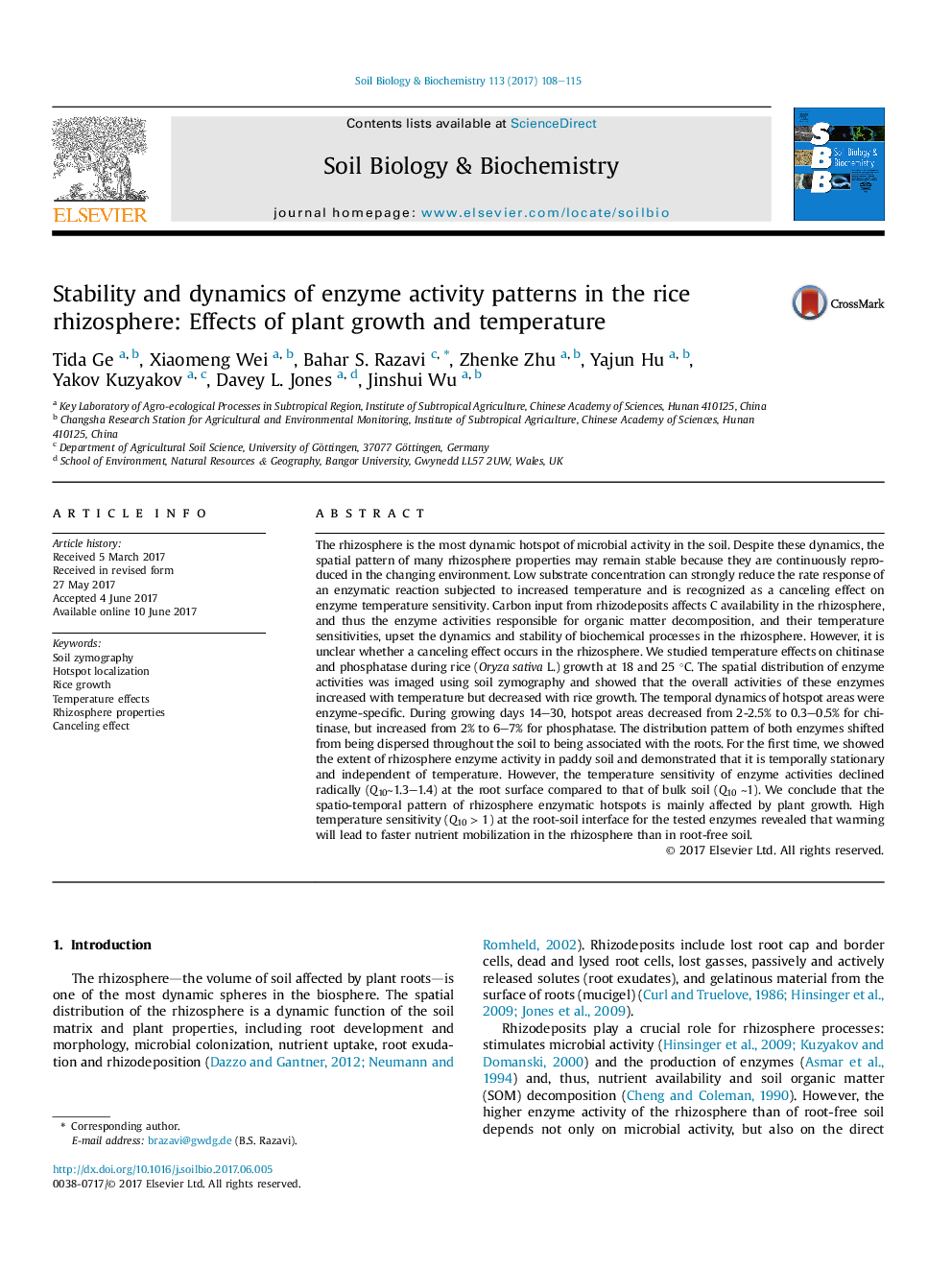| کد مقاله | کد نشریه | سال انتشار | مقاله انگلیسی | نسخه تمام متن |
|---|---|---|---|---|
| 5516372 | 1542571 | 2017 | 8 صفحه PDF | دانلود رایگان |
- Warming boosted enzyme activity but time affected hotspot distribution.
- The temporal dynamics of hotspots were enzyme-specific.
- Rhizosphere enzyme activity extent was independent of time and temperature.
- Warm temperatures lead to fast nutrient mobilization in the rhizosphere.
The rhizosphere is the most dynamic hotspot of microbial activity in the soil. Despite these dynamics, the spatial pattern of many rhizosphere properties may remain stable because they are continuously reproduced in the changing environment. Low substrate concentration can strongly reduce the rate response of an enzymatic reaction subjected to increased temperature and is recognized as a canceling effect on enzyme temperature sensitivity. Carbon input from rhizodeposits affects C availability in the rhizosphere, and thus the enzyme activities responsible for organic matter decomposition, and their temperature sensitivities, upset the dynamics and stability of biochemical processes in the rhizosphere. However, it is unclear whether a canceling effect occurs in the rhizosphere. We studied temperature effects on chitinase and phosphatase during rice (Oryza sativa L.) growth at 18 and 25 °C. The spatial distribution of enzyme activities was imaged using soil zymography and showed that the overall activities of these enzymes increased with temperature but decreased with rice growth. The temporal dynamics of hotspot areas were enzyme-specific. During growing days 14-30, hotspot areas decreased from 2-2.5% to 0.3-0.5% for chitinase, but increased from 2% to 6-7% for phosphatase. The distribution pattern of both enzymes shifted from being dispersed throughout the soil to being associated with the roots. For the first time, we showed the extent of rhizosphere enzyme activity in paddy soil and demonstrated that it is temporally stationary and independent of temperature. However, the temperature sensitivity of enzyme activities declined radically (Q10â¼1.3-1.4) at the root surface compared to that of bulk soil (Q10 â¼1). We conclude that the spatio-temporal pattern of rhizosphere enzymatic hotspots is mainly affected by plant growth. High temperature sensitivity (Q10 > 1) at the root-soil interface for the tested enzymes revealed that warming will lead to faster nutrient mobilization in the rhizosphere than in root-free soil.
225
Journal: Soil Biology and Biochemistry - Volume 113, October 2017, Pages 108-115
